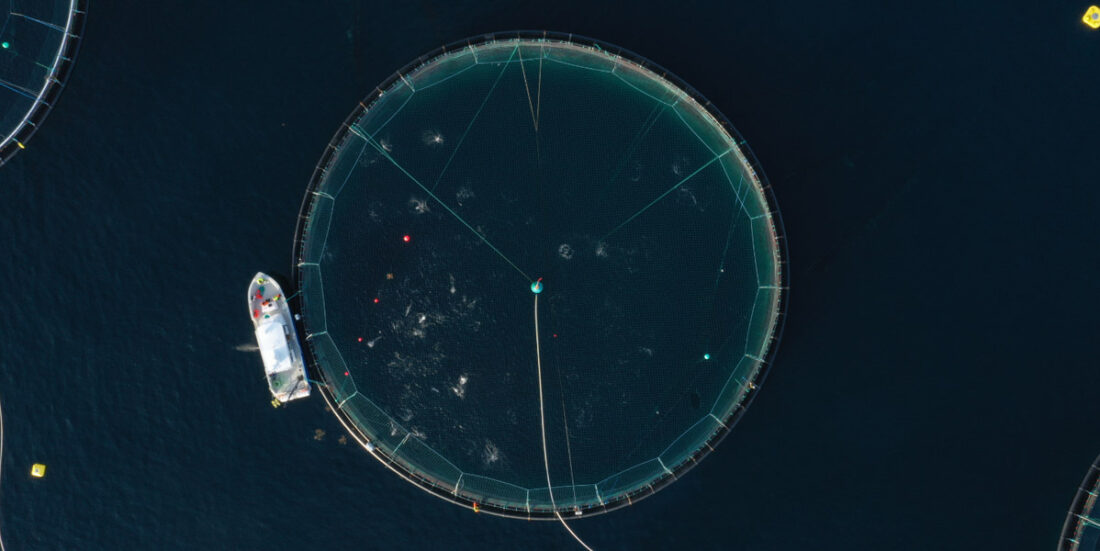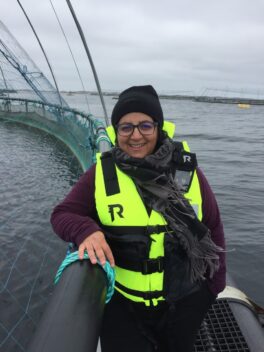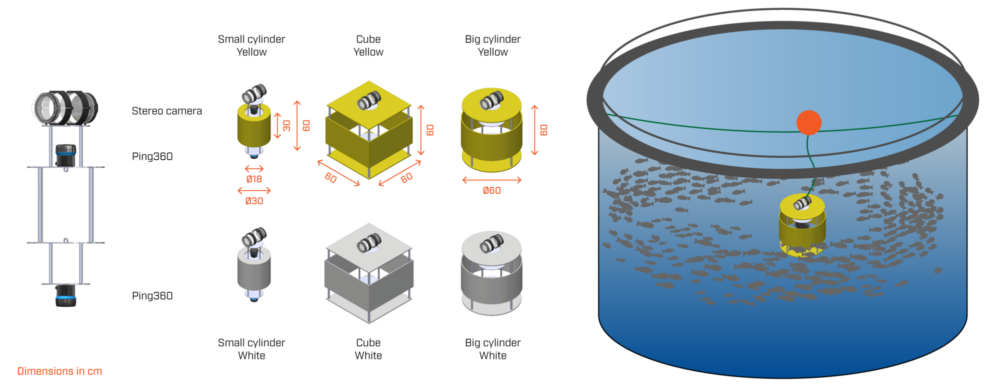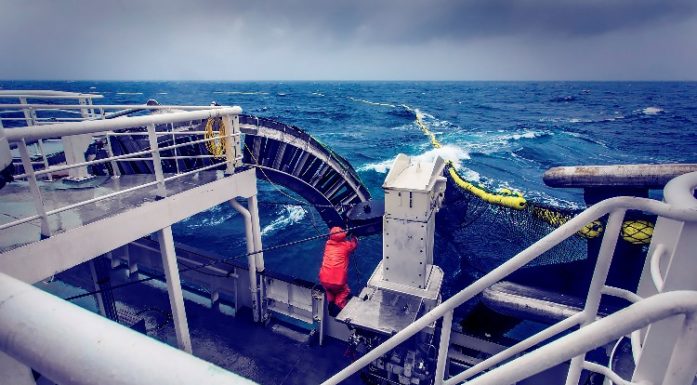Researchers surprised by penned fish responses to robots
Norway leads the world when it comes to the use of robots in the aquaculture sector. But how do these robots actually impact on the fish? Cyberneticist Eleni Kelasidi is surprised by just how much.
“I thought that it would be quite straightforward to apply the same technology as we use in the oil and gas industry to the aquaculture sector”, says Eleni Kelasidi. “So, my first visit to a fish farm turned out to be a real wake-up call”, she says.
Kelasidi had a PhD in the snake robotic technologies that are developed for use in the oil and gas sector before becoming a Senior Research Scientist at SINTEF Ocean’s aquaculture department.
“I never really fully understood that a net pen full of living, moving animals would change the conditions for robot operation so drastically”, says Kelasidi. “It’s very different from operating a robot in the open ocean where we investigate stationary, dead metal objects such as pipelines and turbines”, she says.
Ever since robotics has been applied in the aquaculture sector, most of the equipment used has been that originally developed for the oil and gas industry. Kelasidi believes that more sector-specific robots are required, and her work has involved investigating technologies that cause the least possible disturbance to the fish.
Safety margins – according to the fish
“When we talk about interactions between humans and robots, we take it for granted that we assign highest priority to the needs and safety of the humans”, says Kelasidi. “The same principle lies at the heart of our project Fish-Machine Interaction. We want to contribute towards the development of better robots that can operate fast and efficiently. But they must of course take the needs and safety of the fish into account”, she says.
For three years, Kelasidi, together with post-doctoral student Qin Zhang from NTNU and the rest of her team, have been gathering and analysing data from a variety of different net pens installed at SINTEF Ocean’s full-scale fish farm laboratory, SINTEF ACE. Data gathering has taken place at different locations, at different times of the year, and from fish at different stages in their life cycles.
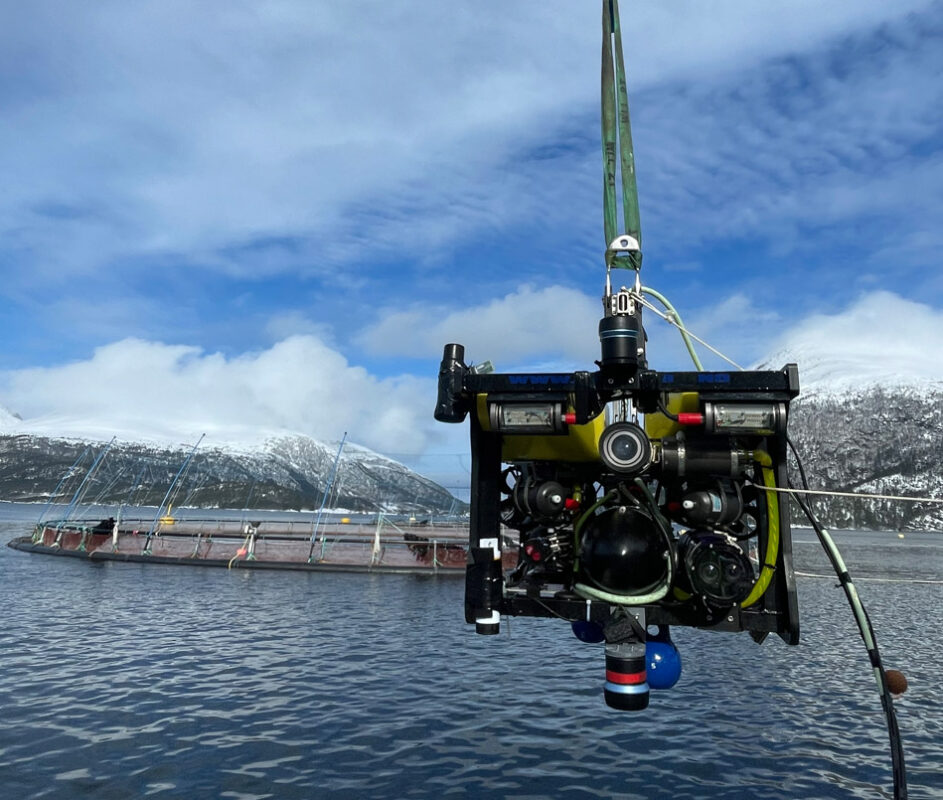
Does this robot disturb penned fish? It is equipped with an echo sounder and cameras that enable it to observe how the fish around it respond to its movements. Here we see it being lowered into the water at a location offshore Kristiansund. Photo: SINTEF.
“We’ve carried out several different measurements for each situation, so our data gathering has been nothing less than comprehensive”, says Kelasidi. “The project is providing us with some clear answers, not least on issues such as what a fish considers to be a safe distance from a given object”, she says.
“One thing that surprised us all is that the relationship between the size of a fish and the distance it keeps from an alien object is in fact linear”, says Kelasidi. “The smaller the fish, the narrower the safety margin”, she says.
One thing that surprised us all is that the relationship between the size of a fish and the distance it keeps from an alien object is in fact linear. The smaller the fish, the narrower the safety margin.
A robot that is lowered into a net pen in fact blocks out a greater volume of water than the equipment itself takes up, and the safety margin that the fish maintain has an impact on how confined it becomes in the pen under different robotic operations. The results of this study will enable fish farm operators to be aware of the distances that the fish keep from the equipment they lower into their pens. For example, fish weighing five kilos keep a distance of three metres. In practice, the fact that younger, smaller fish maintain a narrower safety margin means that more equipment can be lowered into a pen containing young fish without impacting on their swimming patterns and behaviour.
Colour, size, speed and sound
“If we know what disturbs or impacts negatively on penned fish, we can say something about the technical adaptations that equipment manufacturers should be making”, says Kelasidi, who has since discovered more about how the fish respond – and what they overlook.
The research team built a number of objects in a variety of shapes, colours and sizes, with the aim observing and quantifying any variations in the responses of the fish. It turns out that shape makes little difference. The fish respond identically in the presence of both cylinders and cubes. However, they maintain a greater safety margin in the presence of large objects compared to smaller ones, and keep greater distances away from yellow objects than from white ones.
In other words, colour and size both have an impact. The same applies, as demonstrated by previous studies, to the sounds made by, and the speed of movement of, alien objects.
“We hope that technology suppliers will use this information as they continue to develop new equipment”, says Kelasidi. “For us researchers, our goal is to continue to develop technologies that will enable autonomous robots to adapt their behaviour to the responses of penned fish with the aim of disturbing them as little as possible. If a robot’s sensors detect that fish are keeping their distance, or if they recognise a change in behaviour in response to a potential stress stimulus, the robot may, for example, be able to reduce its speed and operate in a manner that causes less disturbance”, she explains.
Aiming to enable robots to adapt
“At present we don’t know whether fish swim away from equipment in response to a stress stimulus, or if their behaviour can be compared to a child at play running away from someone chasing them”, says Kelasidi. “We have to research more into this”, she says, adding that it is useful in any event to know what behaviours fish exhibit in response to different stimuli.
According to Kelasidi, there are many factors that may play a role. If you intend to perform work in a net pen and at the same time keep the fish at a distance, it will be useful to know what colours the fish tend to avoid. If you want to get close to the fish in order to take pictures of them, it is a good idea to use a robot in a colour that causes the least disturbance.
At present, the research team has only tested yellow and white because these are the colours most commonly used by equipment suppliers. In the future, the team aims to investigate how fish respond when a robot rotates or moves, to what extent speed is a factor, and whether or not it matters if movement is horizontal or vertical, or with or without lights.
Kelasidi emphasises that the primary aim is to perform autonomous robotic operations with the least possible disturbance.
“The Norwegian aquaculture sector is a pioneer in the use of technology, and we’re hoping to contribute with know-how that will enable the industry to continue to maintain its position as a world leader in this field”, says Kelasidi. “Robotic technologies that take fish welfare into account will have no impact on the most pressing problems facing the sector today, but they will lay the foundation for improved welfare in the future”, she says.
This research project is being funded by the Research Council of Norway, and both SINTEF and NTNU have been working closely to develop new knowledge that may be relevant in addressing the current and future challenges faced by the aquaculture sector.
Click here to read the article: Farmed Atlantic salmon (Salmo salar L.) avoid intrusive objects in cages: The influence of object shape, size and colour, and fish length.
